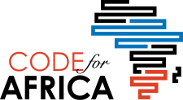How to make an animated forest fire map using Google My Maps and Carto
Maps Maps Visualization VisualizationIntroduction Agricultural burning and forest fire are some of the planet’s most serious environmental problems and, unfortunately, a very common occurrence in many countries. In the forests of the Amazon, the Congo Basin and Southeast Asia, fire can mean the advance of deforestation and most part of the fires are caused by humans in order […]







